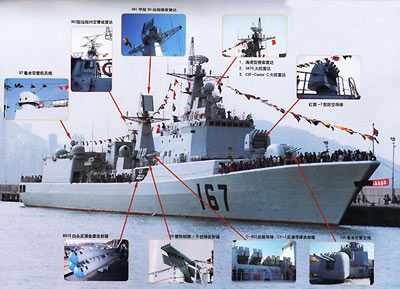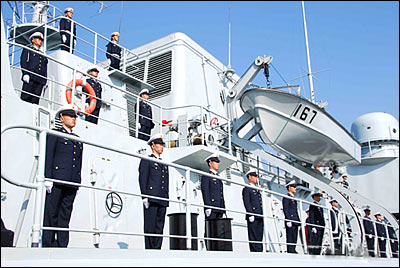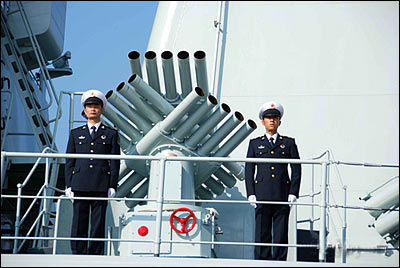A Chinese naval ship left Zhanjiang, Guangdong Province on Wednesday morning for a port call to Japan, the first time in the history of the navy forces of the Chinese People's Liberation Army.
The missile destroyer, named "Shenzhen", will visit Japan from Nov. 28 to Dec. 1, at the invitation of Japanese Maritime Self-Defense Force.
Rear Admiral Xiao Xinnian, vice chief of staff of the South China Sea Fleet of the People's Liberation Army (PLA) Navy, headed 345 naval officials and soldiers on the trip.
The South China Sea Fleet held a warm seeing-off celebration at Zhanjiang, a port city in south China's Guangdong Province.
During the four-day stay in Japan, Chinese naval officials and soldiers will conduct military exchange and entertainment activities with counterparts from the Japanese Maritime Self-Defense Force.
The two sides will also visit each other's naval ships, and the two military bands will give joint performance for citizens in Tokyo.
In addition, the "Shenzhen" will be open to the public.
The visit is being conducted with the consensus of the two countries' government and defense leaders, aiming at promoting the exchange and mutual trust between China and Japan in the defense area, said a senior official from the Foreign Affairs office of China's Defense Ministry.
It is also an important activity in the year 2007, which marks the 35th anniversary of the normalization of Sino-Japanese diplomatic relations, said the official.
Analysts said the landmark visit, following the Japanese tour by Chinese Defense Minister Cao Gangchuan in late August, opens a new page in the history of defense exchanges between China and Japan.
Cao and his then Japanese counterpart Masahiko Komura agreed in the August visit, the first by a Chinese military chief in nearly a decade, that the two sides should invite each other's maritime forces to make exchange visits.
The "Shenzhen" is a modern missile destroyer, designed and made by China. It has visited 13 countries in Asia, Africa and Europe since its acceptance into service in 1999.
(Xinhua News Agency November 21, 2007)





